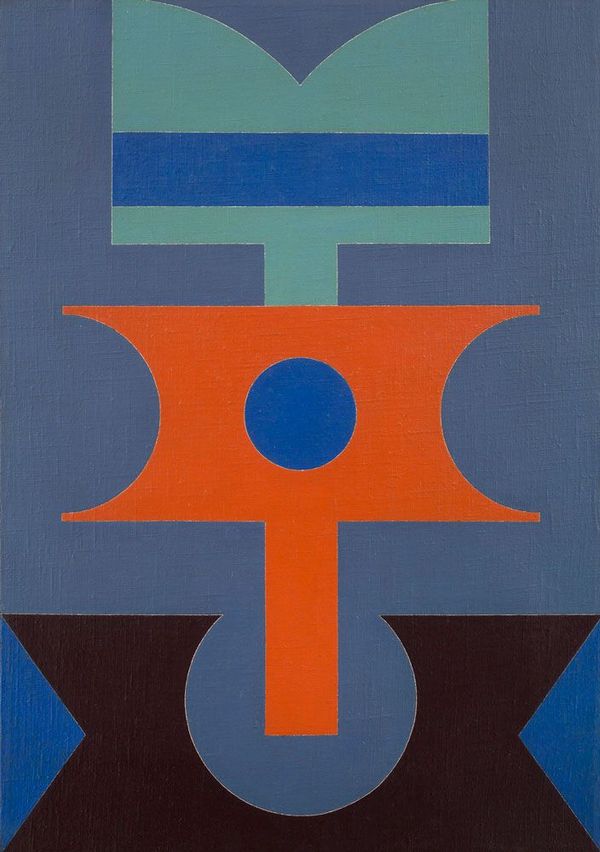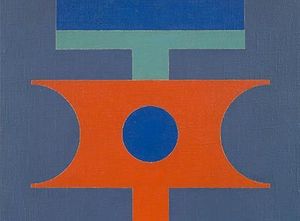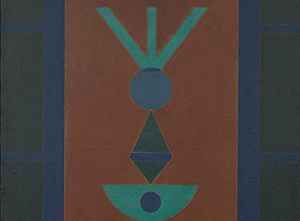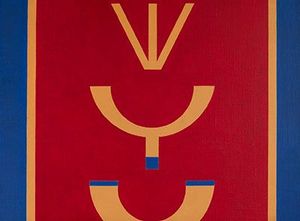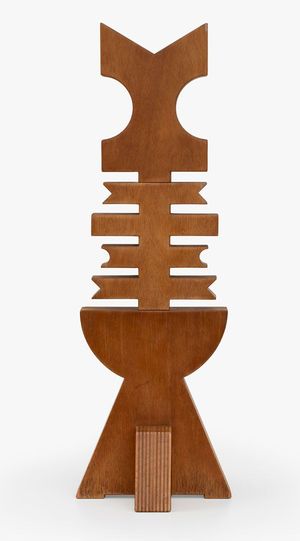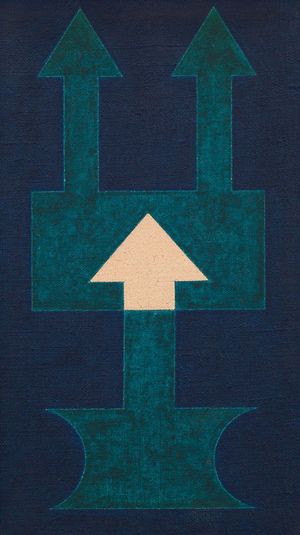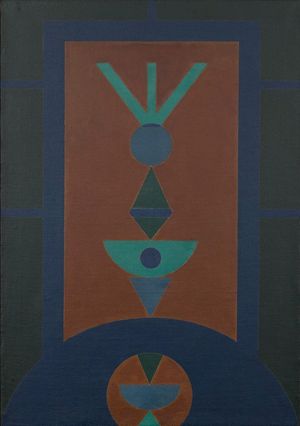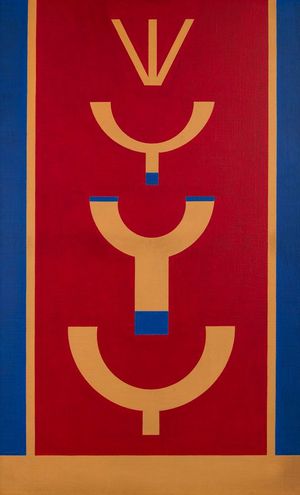Rubem Valentim started painting as a child and began his professional artistic career in the late 1940s, when he participated in a movement of renovation of the arts in Bahia. Before dedicating himself to his artistic career, he worked as a Journalist and Dentist. His multidisciplinary formation included studies in areas such as Journalism, Art History and the Humanities in general, Afro-Brazilian culture and popular music. Born and raised in Salvador, the city with the largest Black population outside the African continent, Valentim was surrounded by the mystic symbology of the African religious universe in Brazil, mainly Candomblé and Umbanda, which play central role in the artist’s symbolic universe.
The instruments of worship, the physical structures of the terreiros [ceremonial houses] and the symbology of the entities are depicted in his work as signs, stylized images created through sober aestheticization of these figures. Two main features of his works are the symbolic use of colors related to the orishas and the recurrent geometric forms such as rectangles, circles, triangles, and trapezoids, which constitute the emblems that are rigorously laid out in his paintings, prints, reliefs, and sculptures. Going beyond the mere formalist use of religious imagery, Valentim maintains the connection of these emblems with their origins, reinforcing the bond with the meanings they manifest, such as protection, sexuality, birth, death, rebirth, the cycle of life and nature.
Valentim lived in Europe between 1963 and 1966 after receiving a travel award for his participation in the 11th Salão Nacional de Arte Moderna. His first solo exhibition outside Brazil – the first international solo show by a Black Brazilian artist - took place in 1965 at the headquarters of the Brazilian Embassy in Italy, the magnificent Palazzo Pamphilj, where his work has been recently exhibited in in the solo show Rubem Valentim: A Riscadura Brasileira [The Brazilian Trace], in 2022. In the same year, his work was the theme of the retrospective show Ilê Funfun: uma homenagem ao centenário de Rubem Valentim [Ilê Funfun: A Homage to the Centenary of Ruben Valentim], presented at Almeida & Dale; Museu Nacional da República, in Brasília; and Museu de Arte Moderna da Bahia, in Salvador. Other major institutions such as Museu de Arte de São Paulo Assis Chateaubriand – MASP and Pinacoteca do Estado de São Paulo organized solo shows of Valentim’s work recently.
The quality and relevance of his work were widely recognized during and after his lifetime, with his participation in major collective exhibitions, such as La Biennale di Venezia, in 1962; several editions of the Bienal Internacional de São Paulo, from 1955 to the 2000s, including the 35th Bienal in 2023; and the World Festival of Black Arts in Senegal, in 1966. His work is part of major institutional collections in Brazil and abroad, such as Museu Afro Brasil Emanoel Araújo, Pinacoteca do Estado de São Paulo, Museu de Arte Moderna da Bahia, Museu de Arte Moderna de São Paulo – MAM SP, Museu de Arte de São Paulo Assis Chateaubriand - MASP, Guggenheim Abu Dhabi, Museum of Modern Art - MoMA, Galeria Nazionale d'Arte Moderna di Roma, and others.
